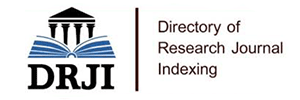
Journal Basic Info
**Impact Factor calculated based on Google Scholar Citations. Please contact us for any more details.Major Scope
- Gastrointestinal Cancer
- Sarcomas
- Adjuvant Therapy
- Chemotherapy and Radiotherapy
- Melanoma/Skin Cancer
- Surgical Oncology
- Kidney Cancer
- Radiological Techniques and Scans
Abstract
Citation: Clin Oncol. 2016;1(1):1159.DOI: 10.25107/2474-1663.1159
Automatisation of the Gleason Score, The End of the Dilemma? A Proposal to Increase Consensus
J Varinot, H Alshehhe, A Furudoi, F Soussaline, M Soussaline, R Renard-Penna, P Mozer, O Cussenot and E Compérat
Department of Pathology, Hôpital La-Pitié Salpêtrière, UPMC Paris VI, France
Imstar, France
Department of Radiology, Hôpital La-Pitié Salpêtrière, UPMC Paris VI, France
Department of Urology, Hôpital La-Pitié Salpêtrière, UPMC Paris VI, France
CeRePP, UPMC Paris VI, France
*Correspondance to: E Comperat
PDF Full Text Research Article | Open Access
Abstract:
Introduction: The updated Gleason score (GS) (WHO classification 2016) decreases interobserver variability, but discordance still exists. The aim was to apply an operator independent method by a computer system (IMSTAR) to give a GS via automated image analysis. Material and
Methods: Twenty-six prostate biopsies (PB) were evaluated by three pathologists. GS was reported, new slides of the same PB were double stained by immunofluorescence (Annexin-3, a marker of low GG and normal tissue, and p504s, a marker of Pca employed in routine) . The slides were scored using Pathfinder™ reader analyzer, for quantitative digital pathology automated scanning of the PB. Detection of different fluorescent signals allowed with a specific algorithm to give a GS by the computer.
Results: The interobserver consensus was 96%. When comparing pathologists and the computer analysis, we found a 100 % agreement in 13 cases (50%). In 8 (31%) cases, GS assigned by pathologists was lower than that assigned by the computer. In 5 cases (19%) pathologists attributed a higher GS than the computer. Discordance never exceeded 1 GG. Major discrepancy existed between the GS 6 and 7.
Conclusion: This study shows feasibility of GS standardization. Automated image analysis seems to be a promising operator independent technique to standardize GS and provide more homogeneous grading for PCa.
Keywords:
Prostate cancer; Gleason grade; prostate biopsy; Quantitative digital pathology
Cite the Article:
Varinot J, Alshehhe H, Furudoi A, Soussaline F, Soussaline M, RenardPenna R, et al. Automatisation of the Gleason Score, The End of the Dilemma? A Proposal to Increase Consensus. Clin Oncol. 2016;1: 1159.













